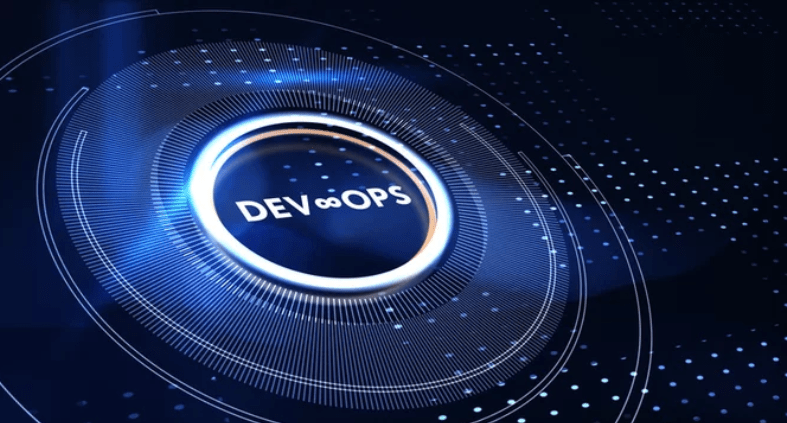Table of Contents
ToggleIntroduction.
In the fast-evolving world of software engineering, automation has become the backbone of speed, quality, and innovation. Every developer knows the importance of pushing code confidently, integrating changes seamlessly, and deploying updates instantly. Yet, traditional CI/CD systems often come with their own burden managing infrastructure, scaling build servers, patching dependencies, and keeping pipelines alive. Teams spend more time maintaining their delivery systems than improving the actual product.
This is where the concept of Serverless CI/CD enters the stage. It redefines how we think about automation by removing servers from the equation entirely. No more managing Jenkins nodes, no more Docker runner clusters, no more idle EC2 instances waiting for the next commit.
Instead, your pipelines become event-driven, ephemeral, and infinitely scalable. Each step in your workflow is triggered on demand, executed in a clean environment, and billed only for the time it runs. The infrastructure fades into the background, allowing developers to focus solely on building and shipping code. Imagine a world where your build pipeline automatically scales with your workload zero configuration required. Where test suites execute in parallel without queuing for limited build agents.
Where deployment logic is handled by lightweight, serverless functions that respond instantly to Git events.
This isn’t science fiction it’s the new reality powered by cloud-native CI/CD tools and serverless platforms.
AWS Lambda, Google Cloud Functions, Azure Functions, and managed CI systems like GitHub Actions or Cloud Build make this possible today. Serverless CI/CD combines the flexibility of automation with the simplicity of serverless computing. It brings elasticity, cost-efficiency, and reliability to every stage of the development lifecycle. Developers no longer need to babysit build machines or debug stuck pipelines.
Instead, they orchestrate events, define triggers, and let the cloud handle the rest. At its core, Serverless CI/CD is not just a technology trend it’s a mindset shift. It reflects a broader movement toward abstraction and automation across modern DevOps practices. In this model, infrastructure becomes invisible, and delivery becomes continuous in the truest sense. With every push, test, and deploy fully automated, teams can achieve rapid iteration without compromising stability. This leads to shorter feedback loops, faster releases, and happier developers. The serverless model also encourages modular, event-driven architectures. Each function or job performs a single task, runs in isolation, and terminates cleanly reducing errors and improving reproducibility.
Security benefits too, as serverless environments are isolated, transient, and managed by cloud providers with strict policies. Scalability ceases to be a concern, since compute resources expand and shrink automatically based on workload.
Costs align directly with activity, eliminating waste from idle capacity. This makes Serverless CI/CD not only a technical improvement but also a financial optimization strategy. From startups to enterprises, organizations are already embracing this paradigm to deliver faster with fewer resources. Whether it’s deploying microservices, running automated tests, or building container images, the possibilities are endless. Integrations with APIs, cloud storage, and monitoring tools further extend its power.
The future of CI/CD is not tied to servers, clusters, or pipelines that require manual upkeep. It is driven by functions, events, and managed workflows that evolve dynamically. As development velocity increases, static infrastructure becomes a bottleneck. Serverless systems remove that constraint, creating an environment of pure automation. This shift transforms DevOps from a practice of management into one of orchestration. Every build, every test, every deployment becomes part of a seamless, autonomous chain.
It’s a revolution that democratizes deployment, reduces operational friction, and accelerates delivery. Serverless CI/CD gives developers their most valuable asset back time. Time to code, to innovate, and to deliver value continuously. It’s the natural evolution of DevOps in a cloud-native era. And as we step into a future defined by scalability and automation, Serverless CI/CD stands as the foundation of that journey. Because when infrastructure disappears, creativity takes its place and innovation moves at the speed of code.
What Is Serverless CI/CD?
Serverless CI/CD is a modern approach to continuous integration and continuous deployment that eliminates the need for managing any underlying infrastructure. In traditional CI/CD systems, developers rely on dedicated servers, runners, or virtual machines to execute build and deployment tasks. These systems require constant maintenance updating operating systems, scaling runners, and troubleshooting environment drift.
Serverless CI/CD changes that by moving these responsibilities to managed, event-driven platforms in the cloud.
It allows you to build, test, and deploy applications without provisioning or managing build servers. Every action in the pipeline is triggered automatically by an event such as a code commit, a pull request, or a configuration change. Instead of running on fixed infrastructure, tasks execute in temporary, isolated environments created on demand. When the job is done, the environment disappears, leaving no lingering resources or maintenance overhead. This design aligns perfectly with the principles of serverless computing scalability, flexibility, and pay-per-use efficiency.
Under this model, developers define pipeline logic through configurations or functions that react to events in the development lifecycle. For example, pushing code to GitHub can trigger a Lambda function that runs unit tests, builds artifacts, or deploys to production. The entire process unfolds dynamically, orchestrated by the cloud provider’s event system. Because everything runs in managed containers or functions, there’s no need to worry about scaling build agents or upgrading dependencies. Serverless CI/CD tools like AWS CodeBuild, Google Cloud Build, Azure DevOps with Functions, and GitHub Actions provide built-in scalability and isolation.
They automatically allocate compute resources based on workload, allowing multiple pipelines to run concurrently without manual intervention.
This eliminates queuing delays and speeds up feedback cycles for developers. Another advantage is cost-efficiency since resources only exist during execution, you pay only for actual compute time. Idle infrastructure, a common inefficiency in traditional CI/CD setups, is completely removed from the equation. This makes Serverless CI/CD particularly appealing for teams with fluctuating workloads or many small projects. It also improves security, as each build or deployment runs in a sandboxed, short-lived environment. Transient infrastructure minimizes exposure and limits potential attack surfaces.
Serverless CI/CD also promotes modularity and composability. Each step in the pipeline from testing to deployment can be built as an independent function or microservice. This enables easy customization and fine-grained control over workflows. For example, one function might handle build validation, another might run automated tests, and a third might deploy to production. Each runs independently, triggered by predefined conditions or events. Integration with cloud-native services such as CloudFormation, Terraform, or Kubernetes APIs allows seamless end-to-end automation. Developers can combine these services to create complete DevOps ecosystems without managing a single server.
This approach fosters agility and innovation by reducing operational overhead. Teams can experiment faster, release more frequently, and maintain higher quality standards. Serverless CI/CD is also cloud-agnostic it can be implemented using any provider that supports event-driven automation. Even fully managed CI/CD systems like GitHub Actions or GitLab CI now operate on similar serverless principles. They provision runners automatically and clean them up after execution, offering the same benefits as cloud-native serverless environments.
At its core, Serverless CI/CD is not just about removing servers it’s about redefining the CI/CD experience.
It abstracts infrastructure so completely that developers can focus entirely on code and logic. It transforms deployment pipelines into lightweight, event-triggered workflows that respond instantly to changes.
In this model, scalability, reliability, and performance are handled by the cloud provider, not the engineering team.
This leads to simpler setups, faster iterations, and fewer operational risks. Serverless CI/CD represents the convergence of DevOps automation and serverless architecture. It embodies the principles of continuous delivery in their purest, most efficient form. By combining automation, abstraction, and elasticity, it empowers teams to ship software at unprecedented speed.
It’s the next step in the evolution of modern software delivery. Where developers once managed infrastructure, they now manage only logic. Where pipelines once required servers, they now run as functions. And where deployments once took minutes or hours, they now complete in seconds. That is the promise of Serverless CI/CD automation without infrastructure, scalability without limits, and delivery without delay.
Why Go Serverless?
The shift toward serverless computing isn’t just a passing trend it’s a fundamental evolution in how we build and deliver software. Traditional CI/CD pipelines often depend on self-managed servers, fixed runners, or dedicated build machines. These systems require constant upkeep: scaling resources, patching operating systems, and ensuring environments remain consistent. Over time, that operational weight slows teams down and introduces unnecessary complexity. By going serverless, you remove that burden entirely.
You delegate infrastructure management to cloud providers and focus solely on your application logic and delivery flow. This transformation brings a wide range of benefits that extend beyond convenience. The most obvious advantage is no infrastructure management. There are no build agents to maintain, no virtual machines to update, and no pipelines to restart after a crash.
Everything runs in fully managed, ephemeral environments created only when needed. This drastically simplifies DevOps workflows and reduces the potential for human error. The next major benefit is automatic scaling. Serverless platforms scale instantly based on demand whether one build is running or a hundred.
You don’t have to pre-provision capacity or worry about concurrent builds. This elasticity ensures that your CI/CD system always matches your team’s velocity.
When more developers push code, more pipelines run automatically, and when activity drops, costs fall back to zero. Which brings us to the next advantage: cost efficiency. In a serverless CI/CD model, you pay only for the time and resources you actually use. There are no idle servers waiting for work, no wasted compute hours, and no underutilized infrastructure. For teams of any size from startups to large enterprises this usage-based model can lead to significant savings. Beyond costs, performance and speed also improve. Serverless environments are lightweight and optimized for quick startup times. Builds run in clean containers or isolated functions with preinstalled dependencies, ensuring consistent performance across environments. Another powerful benefit is security and isolation. Each build or deployment executes in a sandboxed environment that exists only for its duration.
This short-lived nature reduces attack surfaces and minimizes cross-contamination between jobs. Cloud providers also handle patching, updates, and compliance, which strengthens your overall security posture. Serverless CI/CD also brings reliability and resilience by design. Because it’s event-driven and stateless, there’s no single point of failure. If one build fails, it doesn’t affect others, and the system can automatically retry or reroute tasks.
This model naturally aligns with the principles of modern cloud architecture distributed, fault-tolerant, and self-healing. Another major reason to go serverless is developer productivity. Engineers spend less time managing infrastructure and more time building features, writing tests, and improving quality.
Pipeline definitions become code, easily versioned and reusable across projects. This leads to faster iteration cycles and shorter feedback loops, key ingredients of successful DevOps practices. Serverless CI/CD also promotes experimentation and innovation. Since the cost of running pipelines is minimal, teams can safely create new workflows, test ideas, or deploy microservices without fear of resource waste. It encourages agility the ability to move fast, fail fast, and recover instantly. From a business perspective, the time-to-market advantage is enormous. Deployments become faster, updates more frequent, and feedback more immediate. Your delivery pipeline scales naturally with your product’s growth, without costly infrastructure redesigns. In addition, the environmental efficiency of serverless computing reduces energy consumption by optimizing compute utilization across shared resources.
That makes it not only a smart technical choice but also a sustainable one. Going serverless is about focus freeing teams from the distractions of infrastructure so they can innovate at the speed of creativity.
It’s about reducing friction, simplifying complexity, and delivering software continuously without compromise.
In a world where agility defines success, serverless CI/CD isn’t just an optimization it’s a necessity. It’s the foundation for scalable, secure, and sustainable software delivery in the cloud-native era. By going serverless, organizations empower their developers, accelerate innovation, and unlock the true potential of automation. That is why the future of CI/CD and indeed, the future of DevOps is serverless.
Example Architecture
Here’s a typical serverless CI/CD pipeline using AWS services:
- Code Commit → Developer pushes code to GitHub.
- Webhook Trigger → GitHub triggers an AWS Lambda via API Gateway or EventBridge.
- Build Stage → Lambda invokes AWS CodeBuild or runs a build task in a container.
- Deploy Stage → Upon success, CodeBuild or another Lambda function deploys to:
- S3 + CloudFront (static sites)
- ECS / Fargate / Lambda (applications)
- CloudFormation / CDK / Terraform (infrastructure)
Every step is event-driven and stateless, making the pipeline scalable and resilient.
Example: Serverless CI/CD for a Node.js App
Here’s a simplified workflow using GitHub Actions + AWS Lambda:
name: Serverless CI/CD
on:
push:
branches:
- main
jobs:
build_and_deploy:
runs-on: ubuntu-latest
steps:
- name: Checkout
uses: actions/checkout@v4
- name: Install Dependencies
run: npm ci
- name: Run Tests
run: npm test
- name: Deploy via AWS Lambda
uses: appleboy/lambda-action@master
with:
aws_access_key_id: ${{ secrets.AWS_ACCESS_KEY_ID }}
aws_secret_access_key: ${{ secrets.AWS_SECRET_ACCESS_KEY }}
function_name: my-serverless-app
zip_file: ./dist/app.zip
With this setup:
- GitHub hosts the CI/CD infrastructure (serverless runners).
- AWS Lambda handles deployment (serverless runtime).
No servers to patch, ever.
Challenges & Considerations
While serverless CI/CD is powerful, it’s not without tradeoffs:
- Cold starts may slow builds if functions are idle for long.
- Execution time limits (e.g., AWS Lambda’s 15-min limit) can be restrictive for long builds.
- Debugging distributed pipelines can be tricky without good observability (use CloudWatch, Stackdriver, or Datadog).
Real-World Use Cases
- Frontend apps: Vercel and Netlify provide serverless CI/CD by default.
- APIs: Deploy microservices directly via Lambda or Cloud Run.
- IaC: Automate Terraform/CDK deploys using event-driven workflows.
- ML workflows: Trigger model training with serverless jobs on commit.
The Future of CI/CD Is Serverless
The rise of managed CI/CD platforms (like GitHub Actions, Google Cloud Build, and AWS CodePipeline) signals a shift away from self-managed infrastructure.
Serverless CI/CD pipelines are simpler, faster, and more cost-effective especially for teams embracing DevOps and cloud-native architectures.
If you’re still maintaining Jenkins nodes or custom runners, now’s the time to rethink your pipeline.





